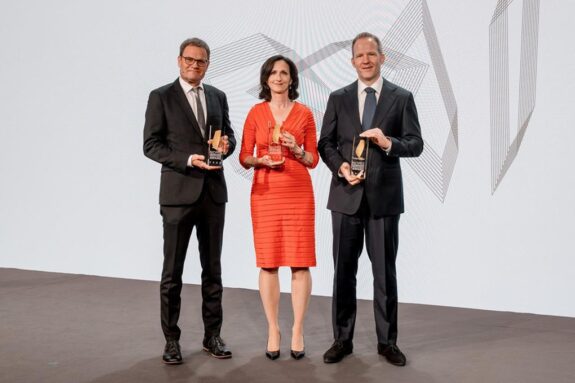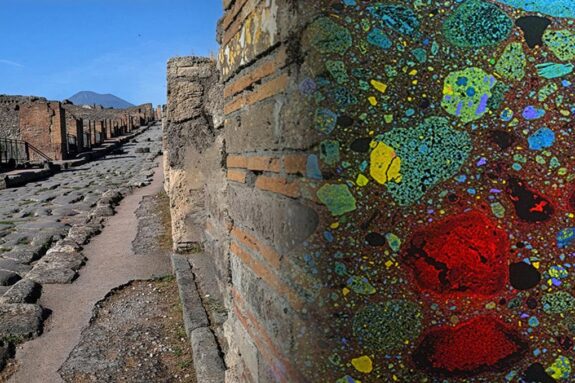Malanotte-Rizzoli and Stone shape the future of climate and ocean science

Peter Stone and Paola Malanotte-Rizzoli on their balcony in Venice. Image courtesy of Paola Malanotte-Rizzoli
With their combined 75 of years of teaching and research at MIT, Professor of Physical Oceanography Paola Malanotte-Rizzoli and Emeritus Professor Peter Stone have formed the bedrock of physical oceanography, meteorology, and climate studies at MIT’s Department of Earth, Atmospheric and Planetary Sciences (EAPS). And now, to that foundation, the couple have added a named professorship chair, generously endowed to the department with the intent of attracting top scientists to enhance the department’s contributions to research, teaching, and mentorship in atmospheric sciences, physical oceanography, climate sciences, or planetary sciences.
“On behalf of the entire department, and especially the future Peter H. Stone and Paola Malanotte Stone Professors and their students, I am immensely grateful for the gift by Peter Stone and Paola Malanotte-Rizzoli—long term colleagues, friends, and leaders of EAPS,” says says Robert van der Hilst, Schlumberger Professor of Earth and Planetary Sciences and EAPS department head. “Their vision to endow a chair will ensure a legacy of continued innovation in research and teaching in fields so important for EAPS and for society, and I am really pleased to see their names connected to EAPS, forever, in this visible and meaningful way.”
The careers of Stone and Malanotte-Rizzoli have constantly evolved. Before arriving at MIT, Stone received a degree in astronomy, with acceptance into the Phi Beta Kappa honor society, and a PhD in applied physics at Harvard University. After his doctoral work, he was named a Junior Fellow, which allowed him academic freedom to independent study, mathematically modeling the development of weather fronts, and later an Alfred P. Sloan Fellow. An Italian native, Malanotte-Rizzoli pursued her passion through an undergraduate degree in physics and math, before earning a doctorate in quantum mechanics— applying molecular orbital theory to evaluate numerically the electron positions within molecules— both from the University of Padua. However, upon meeting elementary particle physicist Professor Giampietro Puppi and being exposed to the problem of predicting the Venice flooding, Malanotte-Rizzoli pivoted her career in physics to that of physical oceanography at the Institute for the Study of Great Masses in Italy. This issue became a central component to her research ever since. Commuting periodically between California and Venice, Malanotte-Rizzoli conducted research as a visiting scientist at Scripps Institution of Oceanography, and later received a second PhD, investigating nonlinear coherent structures such as oceanic rings shed by western boundary currents and atmospheric blocking. She held dual positions at Scripps and as a tenured senior research scientist in Venice.
Upon arriving at MIT, both Stone and Malanotte-Rizzoli quickly established themselves in the then named Department of Meteorology, Course XIX. In 1972, Stone took up a visiting professor position, in addition to joining research staff of NASA’s Goddard Institute for Space Studies (GISS). At GISS he worked on climate modelling—a connection that would be important for years to come. In 1974, he officially joined the MIT faculty under new Department Head Jule Charney, when the department began collaborating closely with the MIT Department of Earth and Planetary Science (Course XII). Stone taught courses in general circulation and atmospheric modelling, around the time when climate and climate change gained worldwide scientific interest and public attention. “His far-reaching interests in dynamical meteorology and dynamical climatology of the Earth and other planets will add much to the Department’s strength in these important areas,” wrote professor Norman Phillips in the annual Report to the President for 1973-74.
“He was a major force in terms of atmospheric dynamics in the NASA GISS climate model. He was on all the papers. It’s always listed as everybody from GISS, and then Peter,” said Chris Forest, professor of climate dynamics at Penn State and one of Stone’s former postdocs. “He was at the forefront of the large modeling projects that were being developed.” Stone continued his early interest in astronomy and planetary sciences as a key player in the science teams behind two NASA projects, Pioneer Venus Orbiter and Galileo, for which he received NASA Group Achievement Awards in 1980 and 1996, respectively.
Stone rapidly established himself as an integral part of the meteorology faculty. He received an Award for Teaching in 1975, the year after his appointment, cementing a reputation for excellence in teaching that would continue throughout his career. Stone went on to become head of the Department of Meteorology and Physical Oceanography in 1981–1983, just before it merged with the Department of Earth and Planetary Science to become EAPS. Subsequently, Stone became the first director of MIT’s Center for Meteorology and Physical Oceanography in 1983–1989.
“Peter Stone understood fully that climate science was inherently multi-disciplinary. He was a founding member of both the Center for Global Change Science (CGCS) and its Joint Program on the Science and Policy of Global Change (JPSPGC),” notes Ronald Prinn, TEPCO Professor of Atmospheric Science in EAPS and Director of the CGCS and JPSPGC. “He was also an early and influential advocate of the need to connect climate science and policy, and he led the development of the Program’s two-dimensional “climate model of intermediate complexity” that included his innovative parameterization for baroclinic eddies. This model remains today as a key module in the Joint Program’s signature Integrated Global System Model (IGSM) framework.”
Stone received numerous honors, including being named a fellow of the American Meteorological Society in 1982, a fellow of the American Association for the Advancement of Science in 2000, and the Bernard Haurwitz Memorial Lecturer by the American Meteorological Society in 2006. His editorial work for scientific journals was also highly regarded, with the chief editor of Journal of Climate Science thanking Stone in 1993 for performing “outstandingly” during the early development of the then recently-established journal.
In 1981, after a call from Charney, Malanotte-Rizzoli jumped at the chance to join the newly-named Department of Meteorology and Physical Oceanography as an assistant professor. In her early years, she carried out “theoretical research on the mechanisms for producing coherent, long-lived dynamical structures in the oceans and atmosphere,” wrote Stone, who by then had just assumed the role of Department Head, in the 1981 Report to the President. “She has been focusing on the possible role of boundary forcing in producing ‘rings’ in the Gulf Stream, and the possible role of topographic forcing in producing blocking ridges in the atmosphere. In addition, she has undertaken a new research project as a member of the Tomography Group, which is using acoustic techniques to explore the ocean interior.” In 1982, Malanotte-Rizzoli co-launched the Physical Oceanography of the Eastern Mediterranean (POEM) Program, which would run for several decades, surveying and modeling the region, and establishing the dynamics of the eastern Mediterranean’s general circulation—prior to this, little was known about the phenomenology of the area and water masses.
While at MIT, Malanotte-Rizzoli was constantly on the move, involving herself in numerous projects and areas of study; if you ask her, she’ll say her “renewal time” is 5-7 years. “I am not a specialist who has focused during the entire course of her or his career on one research core, from which specialized contributions branch out,” she wrote. “I could have been only a theoretical fluid dynamicist, a numerical modeler, an observationalist, or a climate scientist. In a sense, I have been all of them in different phases of my career.” Some of Malanotte-Rizzoli’s contributions included data assimilation into oceanographic models, ocean acoustic tomography using modeling simulations of gyre-scale tomographic arrays, coupled atmosphere-ocean modes in the tropical Atlantic that affect global and regional climates, telecommunications between Atlantic subtropical-tropical cells (STCs), and the Singapore-MIT Alliance for Research and Technology (SMART), which she chaired from 2013-2014. Here, she worked on regional coupled atmosphere-ocean climate models of the Asian Maritime Continent.
However, Malanotte-Rizzoli’s dominating research contribution was her decades of effort to predict and mitigate against Venice’s catastrophic floods— first as a young scientist on the Adriatic, and later as a consultant for the MOdulo Sperimentale Elettromeccanico (MOSE) project from 1995 onward. Through work with the Italian government, scientists, and students at MIT, this culminated in 2020 with the successful deployment of the MOSE flood barriers. In 2021, at the 17th International Biennale of Architecture in Venice, Malanotte-Rizzoli was invited to craft an exhibit on “The Resilience of Venice”.
Shortly after joining MIT, Malanotte-Rizzoli was named associate professor in 1985, and received tenure two years later—the same year Malanotte-Rizzoli and Stone married. In 1991, Stone co-founded MIT’s Joint Program on the Science and Policy of Global Change, where, alongside atmospheric scientist Andrei Sokolov, he continued to refine and develop his earlier work on GISS climate models. In 1992, Malanotte-Rizzoli received a full professorship status within EAPS. Stone went on to serve for eight years as the director of the MIT Climate Modelling Initiative. In 1998, Stone became a professor of climate dynamics, which he held until his retirement in 2006.
During her career, Malanotte-Rizzoli earned many distinctions and firsts, including being the first woman to receive tenure in EAPS and the first female chair of the MIT Committee on Academic Performance (CAP). Malanotte-Rizzoli was the only woman enrolled in the physical oceanography program at Scripps, and, in Italy, for a long time, was the only woman to have obtained a PhD in physical oceanography. Malanotte-Rizzoli also championed inclusion, co-authoring the first studies on the status of women faculty in science at MIT, which have paved avenues for future professorship promotion. She directed of the MIT-WHOI Joint Program in Oceanography from 1997-2009 and chaired the Singapore-MIT SMART Program from 2013-2014. She served on the panel on “Climate Variability and Change” of the National Academies. Malanotte-Rizzoli’s many accomplishments and awards include being named a fellow of the American Meteorological Society in 2002 and of the American Geophysical Union in 2006, winning the Masi Prize for excellence in environmental sciences in 1998, and receiving a Recognition Award from the Italian prime minister for her contributions to the Intergovernmental Panel on Climate Change (IPCC) report that won the 2007 Nobel Peace Prize. Malanotte-Rizzoli has also presented the Enrico Marchi Invited lecture at University of Catania and AGU’s Rachel Carson invited lecture. Within MIT, she was Associate Chair of the MIT Faculty from 2003-2005 and served on search committees for the Institute’s President and Dean of Science.
Both Stone and Malanotte-Rizzoli were instrumental in creating the esteemed community and academic legacy that EAPS enjoys today. Together, they’ve taught numerous courses and mentoring hundreds of students, postdocs, and researchers. Their tireless work helped to grow the department from a handful of enrolled students each year to hundreds.
“I am humbled by Paola and Peter’s decades of exemplary leadership and service to our department and the Institute, and by their seminal contributions to research in a wide range of fields,” says van der Hilst, “as well as by their generosity that will enable and inspire future generations of faculty and students.”


